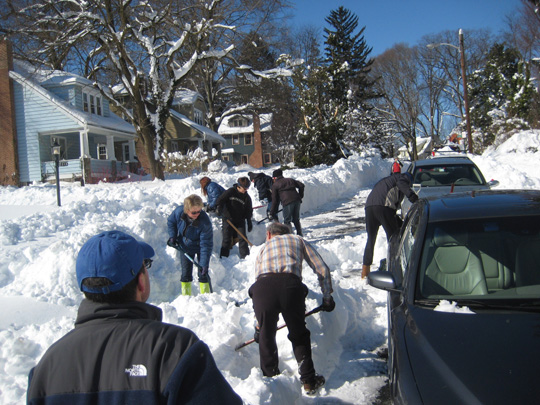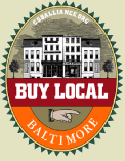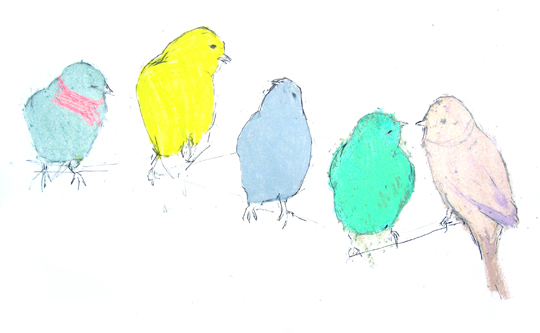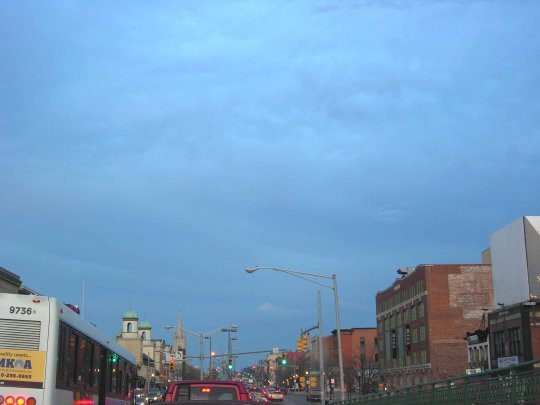9 Signs of Effective Collaboration

After waiting two days for the snowplow to come and liberate us, the neighbors of Crest Road finally took matters into their own hands this morning. A handful of us starting digging out the street, working our way down the block. The idea was to hook up with another portion of the street that had already been cleared. At its peak, there were about twenty people toiling away.
This got me thinking about the key ingredients for a successful collaboration. As you read, think of how this could apply to a current or upcoming project at work.
A shared vision. Should we dig to the east or the west? A quick check on Google Earth confirmed that the eastward direction was shorter – and downhill. We all agreed wholeheartedly with this goal — dig the shortest route to freedom.
Leadership. All it took was four or five people to just get out there and start digging. A quick, three-minute discussion and we were in action.
Cooperation. In a constantly shifting dance, we each managed to dig in our own niche, making all our efforts as efficient as possible. Nobody got in anybody else’s way.
Willingness to do the dirty work. Shoveling two-plus feet of snow is hard work! Especially when you have to lift UP to dump your shovel. I didn’t hear any complaining.
Sense of humor. Laughing and joking certainly made the experience much more fun. We fantasized about sending the city a bill for our services and wondered how our mayor was enjoying her first few days in office, under a snow emergency.
Sharing of tools. Days into recovery from this snowstorm found our family with only one good shovel left. Somehow, there were plenty to go around.
New blood. As we moved down the block, other neighbors joined us, which was a tremendous lift for our morale. Not to mention our sore muscles.
Refreshment. Someone set out a couple of water pitchers and a stack of cups on the hood of their car. It was a generous and caring gesture, and reminded us to take care of the basics even while working hard.
Community. Unusual events like this storm tend to bring out that “we’re all in this together” spirit. This is a good energy to tap into on any collaborative effort – especially when your attention wanes or you get impatient with our results.
In the spirit of “All I Ever Need to Know I Learned in Kindergarten,” if you found this helpful, please comment and share it around!





 View the dynamic, moving GOforChange: Greening Baltimore video
View the dynamic, moving GOforChange: Greening Baltimore video






